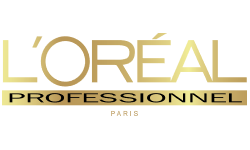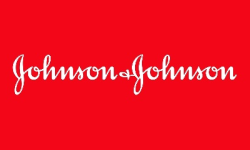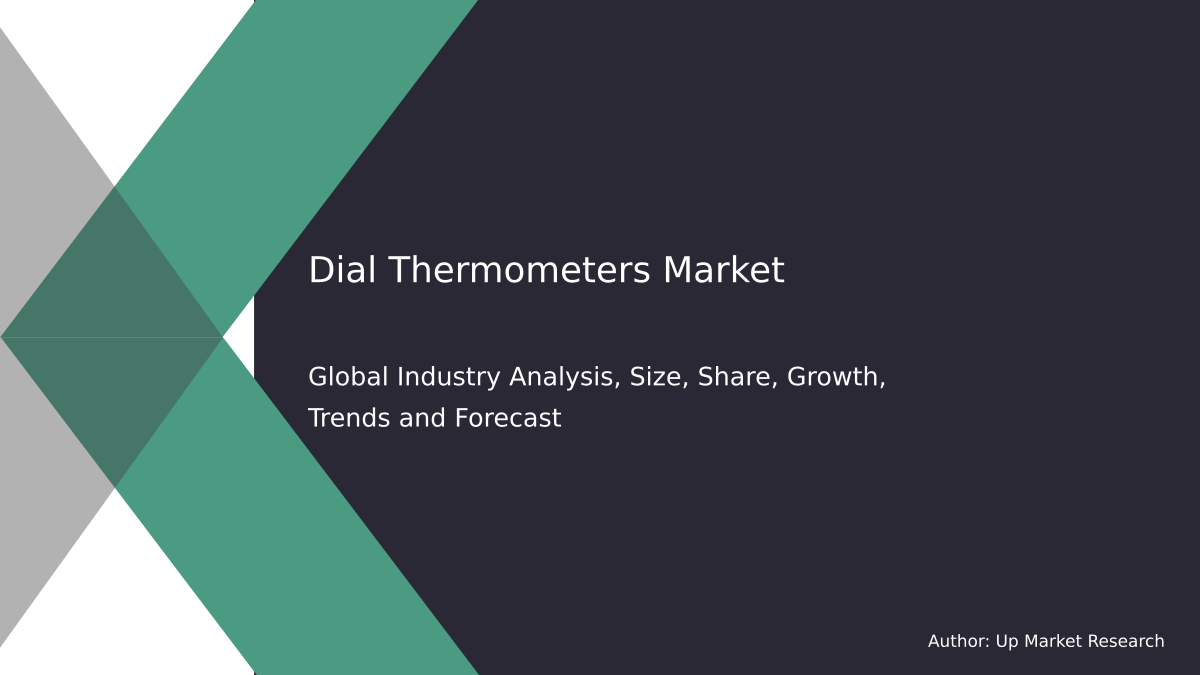
Global Mixed Reality Headsets Sales Market by Type (Tethered Headsets, Untethered Headsets, Others), By Application (Entertainment, Healthcare, Aerospace and Defense, Automotive, Retail, Others) and Region (North America, Latin America, Europe, Asia Pacific and Middle East & Africa), Forecast To 2028
The Global Mixed Reality Headsets Market size is projected to grow at a CAGR of 57.4% during the forecast period. The market research firm predicts that by 2028, it will be worth US$XX billion; this includes both tethered and untethered devices. Untethered headsets are expected to dominate the market in terms of shipment volume due to their increasing affordability and portability for end users.
Mixed Reality Headsets are a combination of virtual reality and augmented reality. It is a technology that allows users to interact with digital objects in the real world. Mixed Reality Headsets provide an immersive experience by blending graphics, sound, and haptic feedback into a single environment. These headsets allow users to view the real world and digital objects simultaneously. Some of the features offered by mixed reality headsets include: Immersive visual experience: Mixed reality headsets offer an immersive visual experience by blending the real world with the digital world. This allows users to view and interact with digital objects in the real world. Interactive environment: Mixed reality headsets allow users to interact with their surroundings in a more interactive way. Users can grab, move and throw digital objects around them using hand gestures. Improved user experience: Mixed reality headsets offer an improved user interface that makes it easier for users to interact with digital objects. Augmented and virtual experiences: Users using mixed reality headsets can switch between augmented and virtual worlds without any difficulty. They can also enjoy a consistent environment across both the real world and mixed spaces.
On the basis of Type, the global mixed reality headsets market is segmented into Tethered Headsets, Untethered Headsets, Others.
Tethered Headsets:
Tethered headsets are those that need to be connected to a PC or gaming console in order to work. They offer a more immersive experience as they provide users with high-resolution graphics and faster response times. Major players in the tethered headset market include HTC Vive, Oculus Rift, and Sony PlayStation VR. It has the following features: A tethered headset provides a cord that is connected to a desktop, laptop, or console which allows for the power and processing resources of these devices. Tethered headsets are currently the most popular type of mixed reality headsets on the market. The tethered headset is the most suitable for users who want a higher quality mixed reality performance. Some of these headsets are also capable of running virtual worlds with full 360-degree movement, which can allow them to be used as an alternative to VR systems.
Untethered Headsets:
Untethered headsets are devices that don’t rely on external sensors to track the physical movements of a person. The head-mounted display has built-in cameras, a gyroscope, and an accelerometer for tracking the user’s movement. No other hardware is required with these devices as they work by themselves without being attached to any separate hardware. Untethered headsets are wireless, and they don't require a cable to be connected to a PC or a mobile device. This type of headset is perfect for those who want to move around freely without being restricted by cables. Some popular untethered headsets include the HTC Vive Focus Plus, Oculus Quest, and Lenovo Mirage Solo. These headsets offer a great VR experience with high-resolution displays and advanced sensors that provide six degrees of freedom. They are also comfortable to wear, thanks to their lightweight design.
On the basis of Application, the global mixed reality headsets market is segmented into Entertainment, Healthcare, Aerospace and Defense, Automotive, Retail, Others.
Entertainment:
Mixed Reality headsets are used in the entertainment industry for gaming and other recreational activities. They provide an immersive experience that allows the users to interact with virtual objects as if they were real. This helps them to escape from the reality and enjoy their leisure time. Some popular games that can be played on mixed reality headsets include Halo, Superhot VR, Arizona Sunshine, and more. Mixed reality headsets are applied to provide the best user experience and simplify the process of content creation for developers, designers, animators, etc.
Healthcare:
Mixed Reality headsets have a wide range of applications in the Healthcare industry. They are used for training and simulation, pre-operative planning, patient care and post-operative follow-up. In addition, they are also being used to provide immersive experiences to patients. For instance, the University of Michigan Health System has developed an app called 'Virtual Patient' which allows patients to experience various medical conditions in a virtual environment. This helps them to understand their condition and treatment better. Mixed Reality headsets are also being used for surgery planning and execution. Some of the leading players in this market are Microsoft, Google, Samsung, Sony, HTC, etc.
Aerospace And Defense:
Mixed Reality Headsets find application in the Aerospace industry for design and training purposes. In the design process, designers can overlay digital designs onto a physical object to get a better understanding of how it would look and work. This helps reduce time-to-market and also eliminates the need for expensive prototypes. Mixed Reality headsets are also used for training pilots and other crew members. They can be used to provide real-time instructions and feedback on tasks that need to be performed in an aircraft. This helps improve safety and efficiency while reducing training costs.
Mixed reality headsets are used in the Defense sector for simulation and training. The headsets provide a realistic environment to train soldiers for real-world combat scenarios. In addition, mixed reality headsets are also being used in the manufacturing and automotive sectors for product development and design purposes. They offer an immersive experience that allows users to view products from all angles and identify any manufacturing errors.
Automotive:
Mixed Reality Headsets are also finding increased application in the automotive industry. Designers can use them to create a virtual model of a car and then test different driving scenarios. This helps identify any potential problems before the car is actually built. Automotive companies can also use Mixed Reality headsets to provide interactive product demonstrations to their customers. In addition, mixed reality headsets can also be used to provide training simulations for drivers. These simulations allow them to familiarize themselves with different vehicles before actually using them.
Retail:
Mixed Reality headsets are finding applications in the retail sector for product visualization and demonstration. Retailers can use Mixed Reality headsets to provide a virtual environment for their customers to experience the products before buying them. This helps reduce the return rate of products and also increases customer satisfaction. Additionally, retailers can use Mixed Reality headsets to create interactive displays that attract customers and increase sales. Mixed Reality headsets are thus becoming an important tool for retailers to engage customers and boost their business.
On the basis of Region, the global mixed reality headsets market is segmented into North America (U.S., Canada), Europe (UK, Germany France), Asia Pacific (China India), and the Rest of the World. North America is projected for the largest market share in 2019 and would maintain its dominance till 2028. Asia Pacific region has been witnessing high growth rates, due to the presence of major players like HTC Vive (China), Sony Interactive Entertainment (Japan), and Microsoft Corporation (U.S.).
The market for mixed reality headsets is in its infancy in Europe. The region has some of the biggest names in entertainment, retail, and manufacturing industries dominating it. With Microsoft being one of the major influencers of augmented technologies through the Windows Mixed Reality platform, this makes sense that Europe is on track with adopting these new technologies into their businesses or homes for personal use. In the UK, for example, mixed reality headsets are being used in automotive and healthcare training simulations. Germany has seen a number of retail applications for the technology and France are seeing an uptake in the aerospace and defense industries.
Growth Factors For The Global Mixed Reality Headsets Market:
- High investments in the global mixed reality headsets market by leading players.
- Availability of highly immersive experience through virtual or augmented simulation to enhance user-product interaction.
- High growth opportunities in the global mixed reality headsets market for manufacturers across different regions.
- Increasing demand for mixed reality headsets in the commercial sector for product visualization and training.
- The growing trend of using mixed reality headsets in gaming and other recreational activities.
- Increasing demand for mixed reality headsets in the healthcare sector for surgical training and treatment.
- Rising number of startups focusing on the development of mixed reality headsets is expected to fuel the growth of the market during the forecast period.
Up Market Research published a new report titled “Mixed Reality Headsets Sales Market research report which is segmented by Types (Tethered Headsets, Untethered Headsets, Others), By Applications (Entertainment, Healthcare, Aerospace and Defense, Automotive, Retail, Others), By Players/Companies Vendor profiles, Apple, Atheer, Dell, GlassUP S.r.l, Google,, Hewlett & Packard, HTC Corporation, Lenovo, LG Electronics, Magic Leap, Microsoft Corporation”. As per the study the market is expected to grow at a CAGR of XX% in the forecast period.
Report Scope
| Report Attributes | Report Details |
| Report Title | Mixed Reality Headsets Sales Market Research Report |
| By Type | Tethered Headsets, Untethered Headsets, Others |
| By Application | Entertainment, Healthcare, Aerospace and Defense, Automotive, Retail, Others |
| By Companies | Vendor profiles, Apple, Atheer, Dell, GlassUP S.r.l, Google,, Hewlett & Packard, HTC Corporation, Lenovo, LG Electronics, Magic Leap, Microsoft Corporation |
| Regions Covered | North America, Europe, APAC, Latin America, MEA |
| Base Year | 2020 |
| Historical Year | 2018 to 2019 (Data from 2010 can be provided as per availability) |
| Forecast Year | 2028 |
| Number of Pages | 203 |
| Number of Tables & Figures | 143 |
| Customization Available | Yes, the report can be customized as per your need. |
The report covers comprehensive data on emerging trends, market drivers, growth opportunities, and restraints that can change the market dynamics of the industry. It provides an in-depth analysis of the market segments which include products, applications, and competitor analysis.

Global Mixed Reality Headsets Sales Market Report Segments:
The market is segmented by Type Tethered Headsets, Untethered Headsets, Others and By Application Entertainment, Healthcare, Aerospace and Defense, Automotive, Retail, Others.
Some of the companies that are profiled in this report are:
- Vendor profiles
- Apple
- Atheer
- Dell
- GlassUP S.r.l
- Google,
- Hewlett & Packard
- HTC Corporation
- Lenovo
- LG Electronics
- Magic Leap
- Microsoft Corporation
Mixed Reality Headsets Sales Market research report delivers a close watch on leading competitors with strategic analysis, micro and macro market trend and scenarios, pricing analysis and a holistic overview of the market situations in the forecast period. It is a professional and a detailed report focusing on primary and secondary drivers, market share, leading segments and geographical analysis. Further, key players, major collaborations, merger & acquisitions along with trending innovation and business policies are reviewed in the report.
Key Benefits for Industry Participants & Stakeholders:
- Industry drivers, restraints, and opportunities covered in the study
- Neutral perspective on the market performance
- Recent industry trends and developments
- Competitive landscape & strategies of key players
- Potential & niche segments and regions exhibiting promising growth covered
- Historical, current, and projected market size, in terms of value
- In-depth analysis of the Mixed Reality Headsets Sales Market
Overview of the regional outlook of the Mixed Reality Headsets Sales Market:
Based on region, the market is segmented into North America, Europe, Asia Pacific, Latin America and Middle East & Africa (MEA). North America region is further bifurcated into countries such as U.S., and Canada. The Europe region is further categorized into U.K., France, Germany, Italy, Spain, Russia, and Rest of Europe. Asia Pacific is further segmented into China, Japan, South Korea, India, Australia, South East Asia, and Rest of Asia Pacific. Latin America region is further segmented into Brazil, Mexico, and Rest of Latin America, and the MEA region is further divided into GCC, Turkey, South Africa, and Rest of MEA.

Highlights of The Mixed Reality Headsets Sales Market Report:
- The market structure and projections for the coming years.
- Drivers, restraints, opportunities, and current trends of Mixed Reality Headsets Sales Market.
- Historical data and forecast.
- Estimations for the forecast period 2028.
- Developments and trends in the market.
- By Type:
1. Tethered Headsets
2. Untethered Headsets
3. Others
7. By Application:1. Entertainment
2. Healthcare
3. Aerospace and Defense
4. Automotive
5. Retail
6. Others
- Market scenario by region, sub-region, and country.
- Market share of the market players, company profiles, product specifications, SWOT analysis, and competitive landscape.
- Analysis regarding upstream raw materials, downstream demand, and current market dynamics.
- Government Policies, Macro & Micro economic factors are also included in the report.
We have studied the Mixed Reality Headsets Sales Market in 360 degrees via. both primary & secondary research methodologies. This helped us in building an understanding of the current market dynamics, supply-demand gap, pricing trends, product preferences, consumer patterns & so on. The findings were further validated through primary research with industry experts & opinion leaders across countries. The data is further compiled & validated through various market estimation & data validation methodologies. Further, we also have our in-house data forecasting model to predict market growth up to 2028.
How you may use our products:
- Correctly Positioning New Products
- Market Entry Strategies
- Business Expansion Strategies
- Consumer Insights
- Understanding Competition Scenario
- Product & Brand Management
- Channel & Customer Management
- Identifying Appropriate Advertising Appeals

Reasons to Purchase the Mixed Reality Headsets Sales Market Report:
- The report includes a plethora of information such as market dynamics scenario and opportunities during the forecast period
- Segments and sub-segments include quantitative, qualitative, value (USD Million,) and volume (Units Million) data.
- Regional, sub-regional, and country level data includes the demand and supply forces along with their influence on the market.
- The competitive landscape comprises share of key players, new developments, and strategies in the last three years.
- Comprehensive companies offering products, relevant financial information, recent developments, SWOT analysis, and strategies by these players.
Chapter 2 Assumptions and Acronyms Used
Chapter 3 Research Methodology
Chapter 4 Mixed Reality Headsets Sales Market Overview
4.1 Introduction
4.1.1 Market Taxonomy
4.1.2 Market Definition
4.1.3 Macro-Economic Factors Impacting the Market Growth
4.2 Mixed Reality Headsets Sales Market Dynamics
4.2.1 Market Drivers
4.2.2 Market Restraints
4.2.3 Market Opportunity
4.3 Mixed Reality Headsets Sales Market - Supply Chain Analysis
4.3.1 List of Key Suppliers
4.3.2 List of Key Distributors
4.3.3 List of Key Consumers
4.4 Key Forces Shaping the Mixed Reality Headsets Sales Market
4.4.1 Bargaining Power of Suppliers
4.4.2 Bargaining Power of Buyers
4.4.3 Threat of Substitution
4.4.4 Threat of New Entrants
4.4.5 Competitive Rivalry
4.5 Global Mixed Reality Headsets Sales Market Size & Forecast, 2018-2028
4.5.1 Mixed Reality Headsets Sales Market Size and Y-o-Y Growth
4.5.2 Mixed Reality Headsets Sales Market Absolute $ Opportunity
Chapter 5 Global Mixed Reality Headsets Sales Market Analysis and Forecast by Type
5.1 Introduction
5.1.1 Key Market Trends & Growth Opportunities by Type
5.1.2 Basis Point Share (BPS) Analysis by Type
5.1.3 Absolute $ Opportunity Assessment by Type
5.2 Mixed Reality Headsets Sales Market Size Forecast by Type
5.2.1 Tethered Headsets
5.2.2 Untethered Headsets
5.2.3 Others
5.3 Market Attractiveness Analysis by Type
Chapter 6 Global Mixed Reality Headsets Sales Market Analysis and Forecast by Applications
6.1 Introduction
6.1.1 Key Market Trends & Growth Opportunities by Applications
6.1.2 Basis Point Share (BPS) Analysis by Applications
6.1.3 Absolute $ Opportunity Assessment by Applications
6.2 Mixed Reality Headsets Sales Market Size Forecast by Applications
6.2.1 Entertainment
6.2.2 Healthcare
6.2.3 Aerospace and Defense
6.2.4 Automotive
6.2.5 Retail
6.2.6 Others
6.3 Market Attractiveness Analysis by Applications
Chapter 7 Global Mixed Reality Headsets Sales Market Analysis and Forecast by Region
7.1 Introduction
7.1.1 Key Market Trends & Growth Opportunities by Region
7.1.2 Basis Point Share (BPS) Analysis by Region
7.1.3 Absolute $ Opportunity Assessment by Region
7.2 Mixed Reality Headsets Sales Market Size Forecast by Region
7.2.1 North America
7.2.2 Europe
7.2.3 Asia Pacific
7.2.4 Latin America
7.2.5 Middle East & Africa (MEA)
7.3 Market Attractiveness Analysis by Region
Chapter 8 Coronavirus Disease (COVID-19) Impact
8.1 Introduction
8.2 Current & Future Impact Analysis
8.3 Economic Impact Analysis
8.4 Government Policies
8.5 Investment Scenario
Chapter 9 North America Mixed Reality Headsets Sales Analysis and Forecast
9.1 Introduction
9.2 North America Mixed Reality Headsets Sales Market Size Forecast by Country
9.2.1 U.S.
9.2.2 Canada
9.3 Basis Point Share (BPS) Analysis by Country
9.4 Absolute $ Opportunity Assessment by Country
9.5 Market Attractiveness Analysis by Country
9.6 North America Mixed Reality Headsets Sales Market Size Forecast by Type
9.6.1 Tethered Headsets
9.6.2 Untethered Headsets
9.6.3 Others
9.7 Basis Point Share (BPS) Analysis by Type
9.8 Absolute $ Opportunity Assessment by Type
9.9 Market Attractiveness Analysis by Type
9.10 North America Mixed Reality Headsets Sales Market Size Forecast by Applications
9.10.1 Entertainment
9.10.2 Healthcare
9.10.3 Aerospace and Defense
9.10.4 Automotive
9.10.5 Retail
9.10.6 Others
9.11 Basis Point Share (BPS) Analysis by Applications
9.12 Absolute $ Opportunity Assessment by Applications
9.13 Market Attractiveness Analysis by Applications
Chapter 10 Europe Mixed Reality Headsets Sales Analysis and Forecast
10.1 Introduction
10.2 Europe Mixed Reality Headsets Sales Market Size Forecast by Country
10.2.1 Germany
10.2.2 France
10.2.3 Italy
10.2.4 U.K.
10.2.5 Spain
10.2.6 Russia
10.2.7 Rest of Europe
10.3 Basis Point Share (BPS) Analysis by Country
10.4 Absolute $ Opportunity Assessment by Country
10.5 Market Attractiveness Analysis by Country
10.6 Europe Mixed Reality Headsets Sales Market Size Forecast by Type
10.6.1 Tethered Headsets
10.6.2 Untethered Headsets
10.6.3 Others
10.7 Basis Point Share (BPS) Analysis by Type
10.8 Absolute $ Opportunity Assessment by Type
10.9 Market Attractiveness Analysis by Type
10.10 Europe Mixed Reality Headsets Sales Market Size Forecast by Applications
10.10.1 Entertainment
10.10.2 Healthcare
10.10.3 Aerospace and Defense
10.10.4 Automotive
10.10.5 Retail
10.10.6 Others
10.11 Basis Point Share (BPS) Analysis by Applications
10.12 Absolute $ Opportunity Assessment by Applications
10.13 Market Attractiveness Analysis by Applications
Chapter 11 Asia Pacific Mixed Reality Headsets Sales Analysis and Forecast
11.1 Introduction
11.2 Asia Pacific Mixed Reality Headsets Sales Market Size Forecast by Country
11.2.1 China
11.2.2 Japan
11.2.3 South Korea
11.2.4 India
11.2.5 Australia
11.2.6 South East Asia (SEA)
11.2.7 Rest of Asia Pacific (APAC)
11.3 Basis Point Share (BPS) Analysis by Country
11.4 Absolute $ Opportunity Assessment by Country
11.5 Market Attractiveness Analysis by Country
11.6 Asia Pacific Mixed Reality Headsets Sales Market Size Forecast by Type
11.6.1 Tethered Headsets
11.6.2 Untethered Headsets
11.6.3 Others
11.7 Basis Point Share (BPS) Analysis by Type
11.8 Absolute $ Opportunity Assessment by Type
11.9 Market Attractiveness Analysis by Type
11.10 Asia Pacific Mixed Reality Headsets Sales Market Size Forecast by Applications
11.10.1 Entertainment
11.10.2 Healthcare
11.10.3 Aerospace and Defense
11.10.4 Automotive
11.10.5 Retail
11.10.6 Others
11.11 Basis Point Share (BPS) Analysis by Applications
11.12 Absolute $ Opportunity Assessment by Applications
11.13 Market Attractiveness Analysis by Applications
Chapter 12 Latin America Mixed Reality Headsets Sales Analysis and Forecast
12.1 Introduction
12.2 Latin America Mixed Reality Headsets Sales Market Size Forecast by Country
12.2.1 Brazil
12.2.2 Mexico
12.2.3 Rest of Latin America (LATAM)
12.3 Basis Point Share (BPS) Analysis by Country
12.4 Absolute $ Opportunity Assessment by Country
12.5 Market Attractiveness Analysis by Country
12.6 Latin America Mixed Reality Headsets Sales Market Size Forecast by Type
12.6.1 Tethered Headsets
12.6.2 Untethered Headsets
12.6.3 Others
12.7 Basis Point Share (BPS) Analysis by Type
12.8 Absolute $ Opportunity Assessment by Type
12.9 Market Attractiveness Analysis by Type
12.10 Latin America Mixed Reality Headsets Sales Market Size Forecast by Applications
12.10.1 Entertainment
12.10.2 Healthcare
12.10.3 Aerospace and Defense
12.10.4 Automotive
12.10.5 Retail
12.10.6 Others
12.11 Basis Point Share (BPS) Analysis by Applications
12.12 Absolute $ Opportunity Assessment by Applications
12.13 Market Attractiveness Analysis by Applications
Chapter 13 Middle East & Africa (MEA) Mixed Reality Headsets Sales Analysis and Forecast
13.1 Introduction
13.2 Middle East & Africa (MEA) Mixed Reality Headsets Sales Market Size Forecast by Country
13.2.1 Saudi Arabia
13.2.2 South Africa
13.2.3 UAE
13.2.4 Rest of Middle East & Africa (MEA)
13.3 Basis Point Share (BPS) Analysis by Country
13.4 Absolute $ Opportunity Assessment by Country
13.5 Market Attractiveness Analysis by Country
13.6 Middle East & Africa (MEA) Mixed Reality Headsets Sales Market Size Forecast by Type
13.6.1 Tethered Headsets
13.6.2 Untethered Headsets
13.6.3 Others
13.7 Basis Point Share (BPS) Analysis by Type
13.8 Absolute $ Opportunity Assessment by Type
13.9 Market Attractiveness Analysis by Type
13.10 Middle East & Africa (MEA) Mixed Reality Headsets Sales Market Size Forecast by Applications
13.10.1 Entertainment
13.10.2 Healthcare
13.10.3 Aerospace and Defense
13.10.4 Automotive
13.10.5 Retail
13.10.6 Others
13.11 Basis Point Share (BPS) Analysis by Applications
13.12 Absolute $ Opportunity Assessment by Applications
13.13 Market Attractiveness Analysis by Applications
Chapter 14 Competition Landscape
14.1 Mixed Reality Headsets Sales Market: Competitive Dashboard
14.2 Global Mixed Reality Headsets Sales Market: Market Share Analysis, 2019
14.3 Company Profiles (Details – Overview, Financials, Developments, Strategy)
14.3.1 Vendor profiles
14.3.2 Apple
14.3.3 Atheer
14.3.4 Dell
14.3.5 GlassUP S.r.l
14.3.6 Google,
14.3.7 Hewlett & Packard
14.3.8 HTC Corporation
14.3.9 Lenovo
14.3.10 LG Electronics
14.3.11 Magic Leap
14.3.12 Microsoft Corporation
The global Mixed Reality Headsets Sales market has been segmented based on
By Types
- Tethered Headsets
- Untethered Headsets
- Others
- Entertainment
- Healthcare
- Aerospace and Defense
- Automotive
- Retail
- Others
- Asia Pacific
- North America
- Latin America
- Europe
- Middle East & Africa
- Vendor profiles
- Apple
- Atheer
- Dell
- GlassUP S.r.l
- Google,
- Hewlett & Packard
- HTC Corporation
- Lenovo
- LG Electronics
- Magic Leap
- Microsoft Corporation
Related Reports
Some other reports from this category!



















